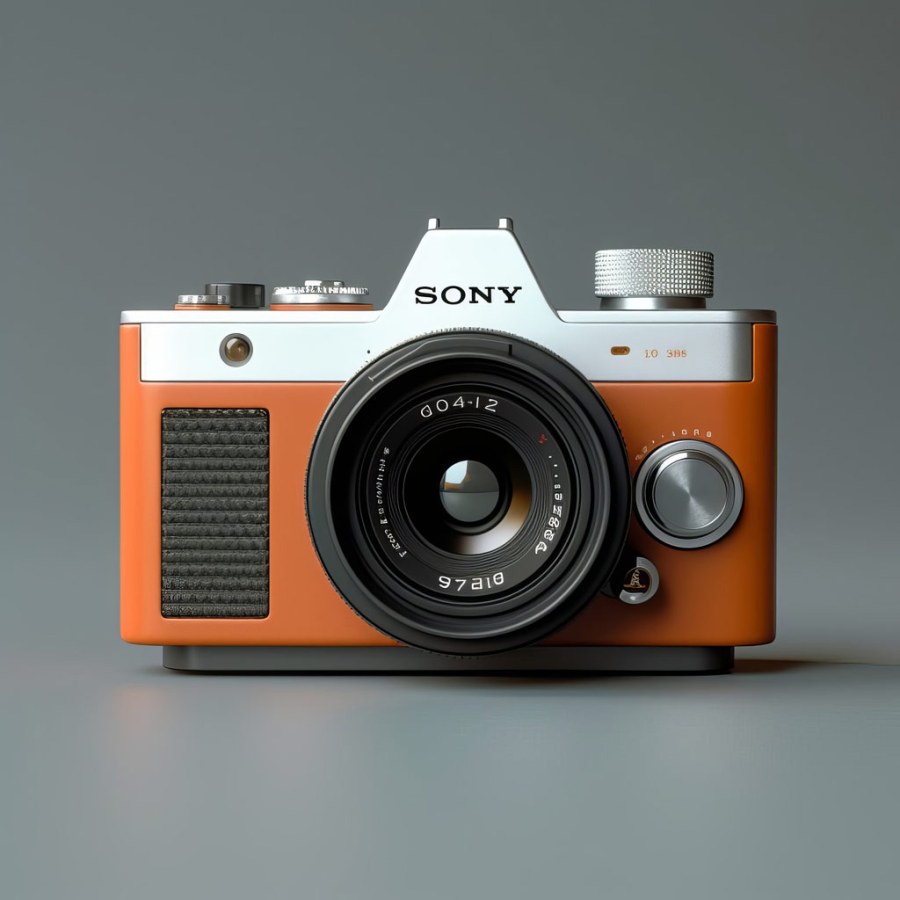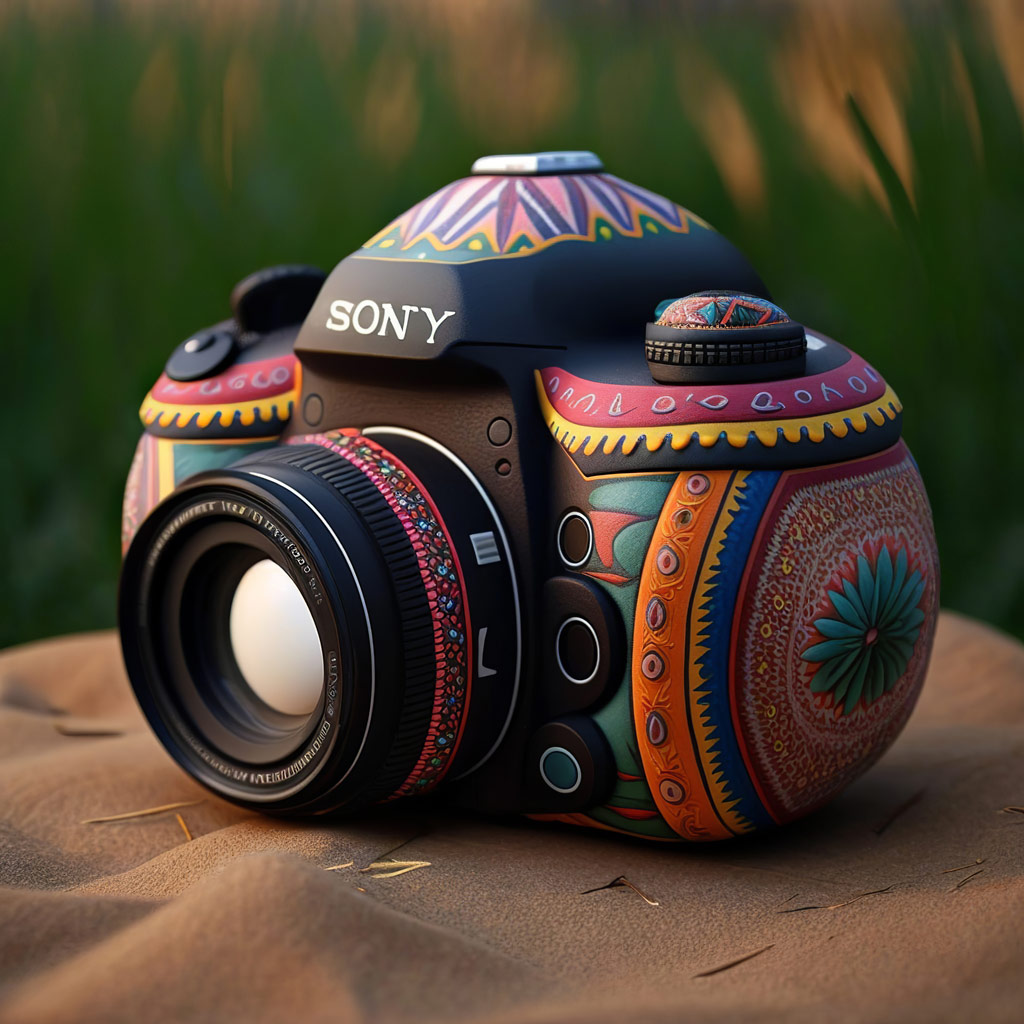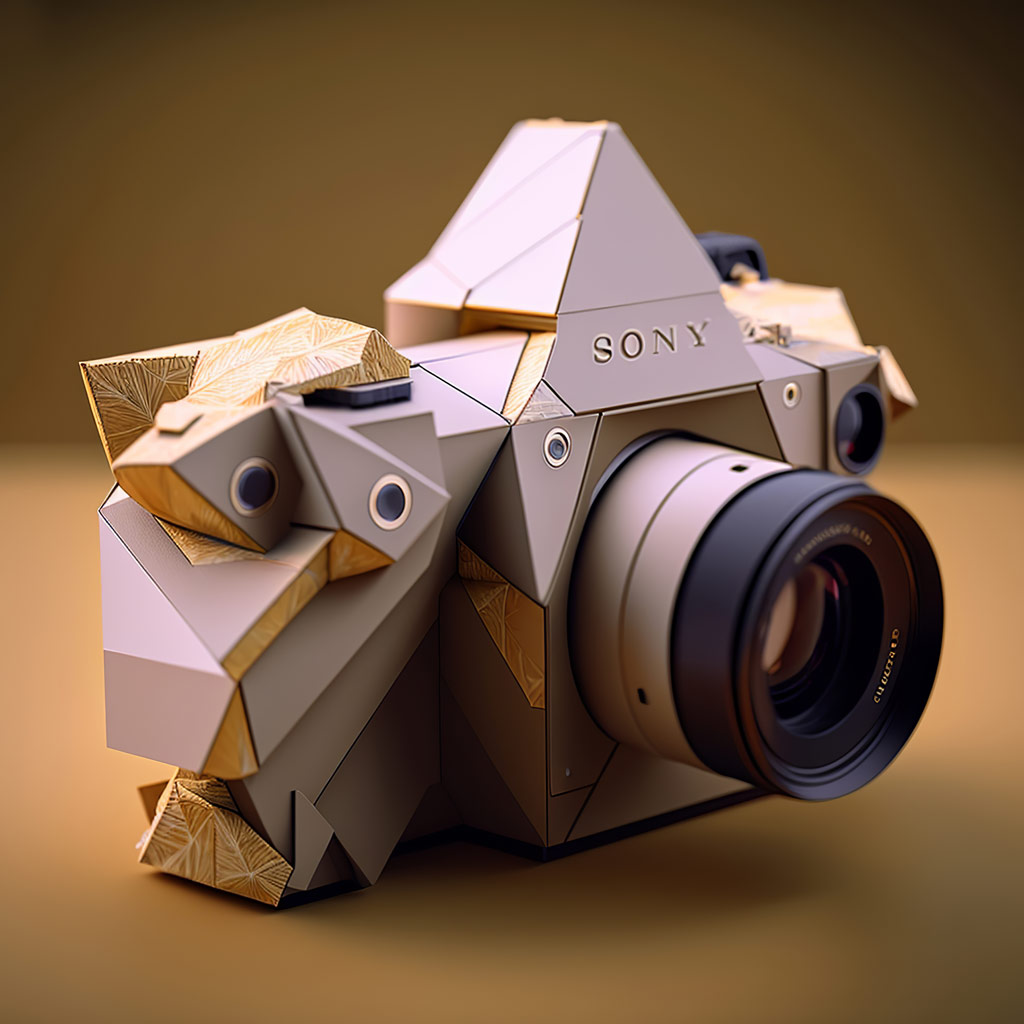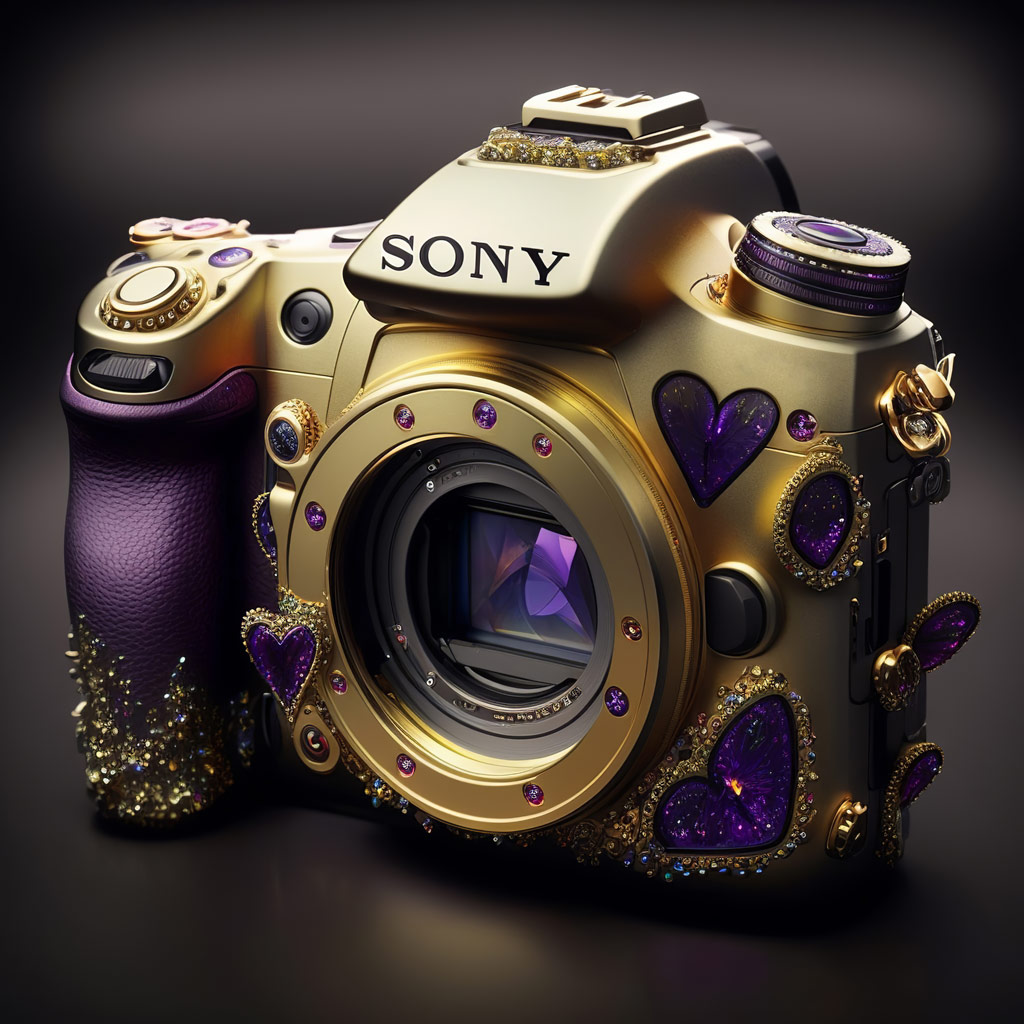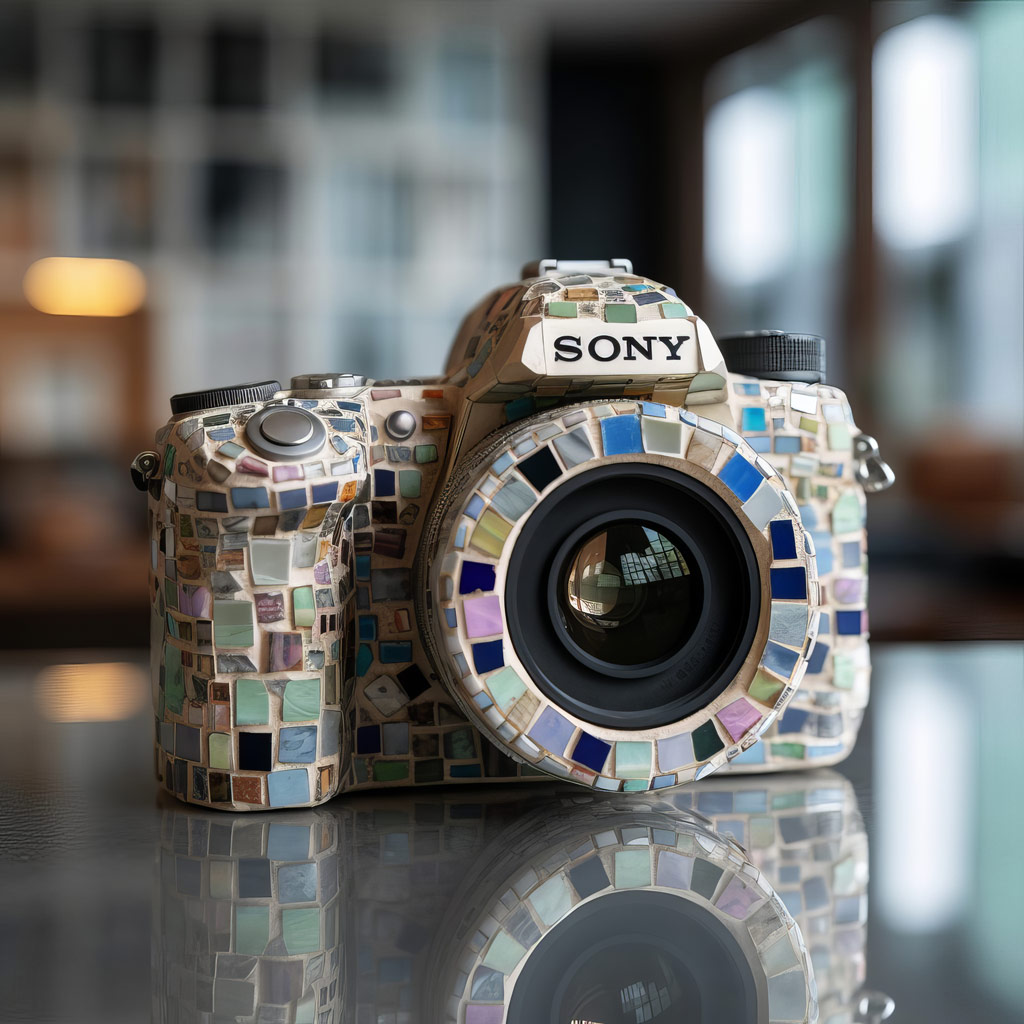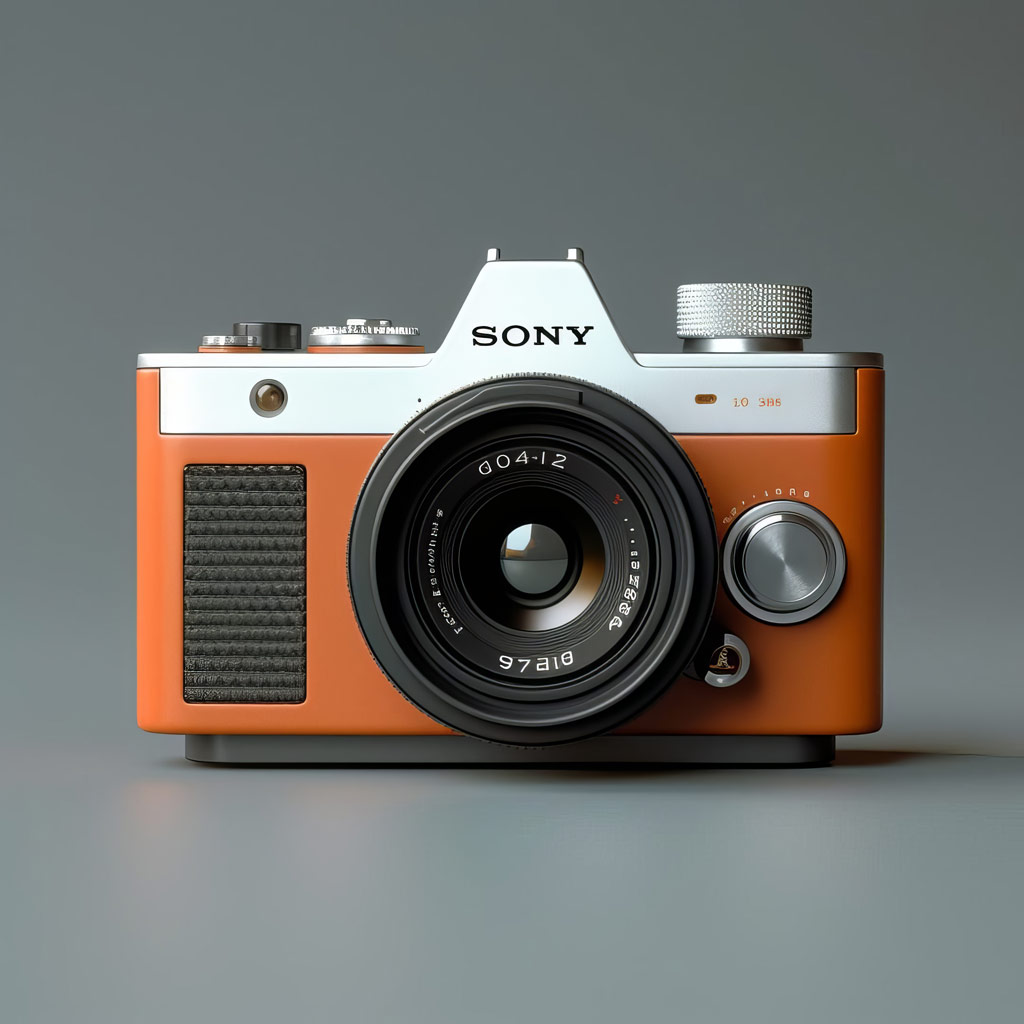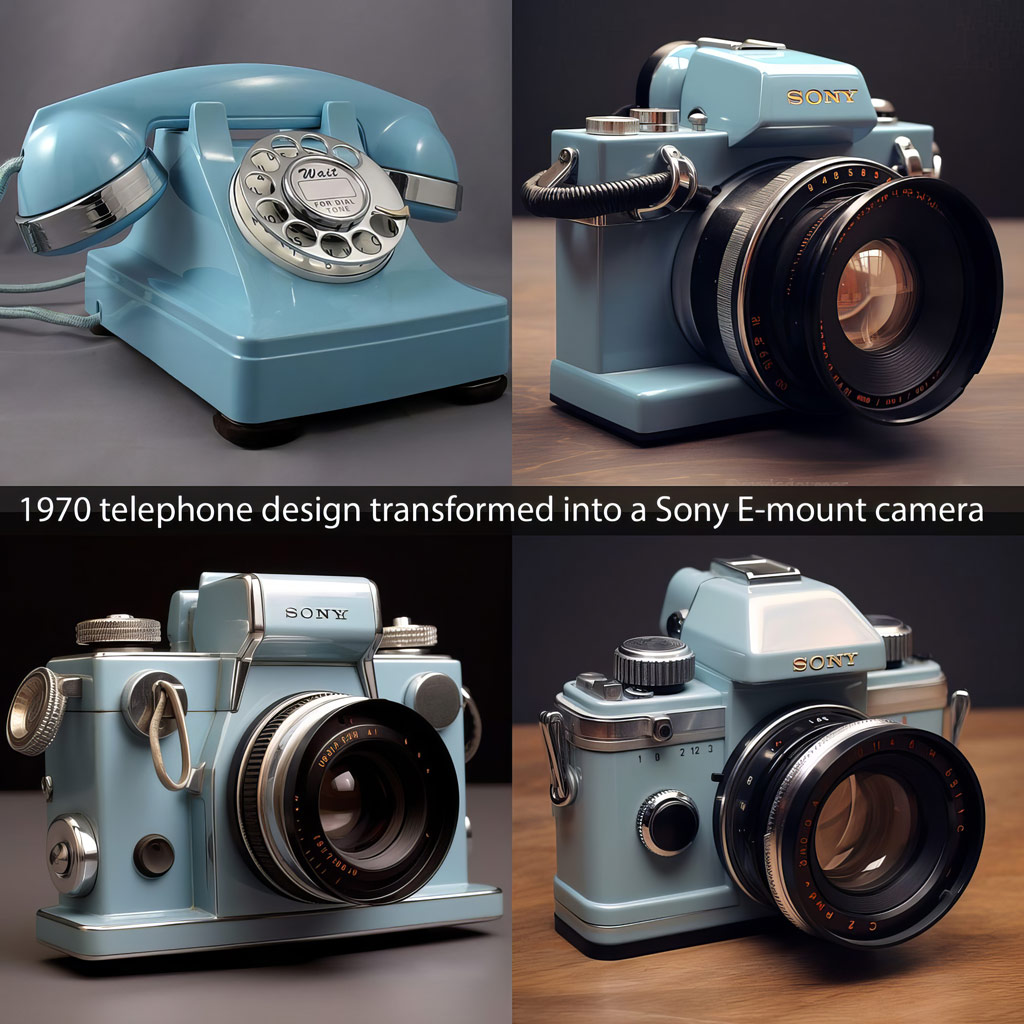Left feeling uninspired by the almost industrial design of Sony Alpha cameras, Italian photographer Andrea Pizzini set about creating AI-generated versions of his favourite cameras. He shares his thoughts with James Abbott about what this new technology means to him.
Image generation using artificial intelligence is a highly contentious issue in photography, there’s no getting away from it. It spans many ethical questions, ranging from the training of AI algorithms using images scraped from the internet without the permission of the copyright owners to questions of veracity in news and documentary photography and beyond. Not least the fear that professional photographers might one day be replaced by AI.
It’s a complex subject and it’s fair to say that as photographers, we all have our own opinions. However, the debates surrounding AI image generation aren’t black and white, and not all images created using this method are designed to mislead people into believing an alternative view of the world or reality. Some images are created out of curiosity, and that was Andrea Pizzini’s starting point when he began creating mesmerising and indeed fun images of Sony Alpha cameras.

I visited an alien planet and that’s how Sony cameras look there. AI-generated image by Andrea Pizzini
Clear goal
So, why create Sony cameras with AI? Andrea had a clear goal in the beginning and it’s far from the sinister portrayal of AI in the media. He explained, ‘There are two reasons; I wanted to test the new AI- generation tools to see what’s going on, and if we’re going to lose our jobs soon; and the second reason I chose cameras is because I’m a writer on sonyalpharumors.com and I own Sony cameras, but I’ve never really liked the design of them.’ He continues, ‘Nikon, Leica and Fujifilm cameras have an appealing design, but Sony camera design lacks emotion. So, for fun, to test the new tools, I tried to imagine new kinds of Sony cameras. When I posted the images on my Instagram account they went viral, so people liked what I was imagining and creating.’
The level of creativity Andrea injects into his camera ‘prototypes’ is inspiring, and AI provides the perfect tool where he can draw upon his knowledge and background in photography and design to realise his vision. Of course, he could employ an expert modelmaker to create these fantasy cameras and photograph the models within reality, but this would likely take many years and a huge amount of money to create such a large and varied body of work. Furthermore, that wouldn’t fit with his initial motivation for trying the technology. So, with AI, which he only began experimenting with in 2022, Andrea’s only limitation appears to be his creativity and inspiration for creating new designs. The inspiration for the cameras comes from, ‘Everyday stuff. Like, for example, I was playing on the PlayStation with my son, looked at the controller and I thought, that looks like a cool design. So, let’s make a Sony PlayStation controller camera. Or you watch a Batman movie, and think, let’s make a Batman camera. That’s the inspiration – simple daily stuff that I see,’ says Andrea.
Some of these images look so close to the inspiration that you can’t help wondering if Andrea imports images alongside the word prompts that are used to try to guide the AI algorithm to produce a certain type of image. He points out that with AI image generation 95% is word-based and that when he uses images for inspiration and design cues, he aims to use images that aren’t copyrighted and are available to everyone.

This is the Sony A1 camera with Nintendo switch controls and a Super Mario-inspired design. Finally, a camera you can have fun with! AI-generated image by Andrea Pizzini
He uses an AI image-generation platform called Midjourney because it’s one of the best available at the moment. He’s under no illusion that this probably won’t always be the case, and suggests that in as little as six months a new platform could emerge that takes image generation far beyond what we have now. AI image generators rely on simple word prompts where the algorithm interprets the words, called prompts, to create an image.
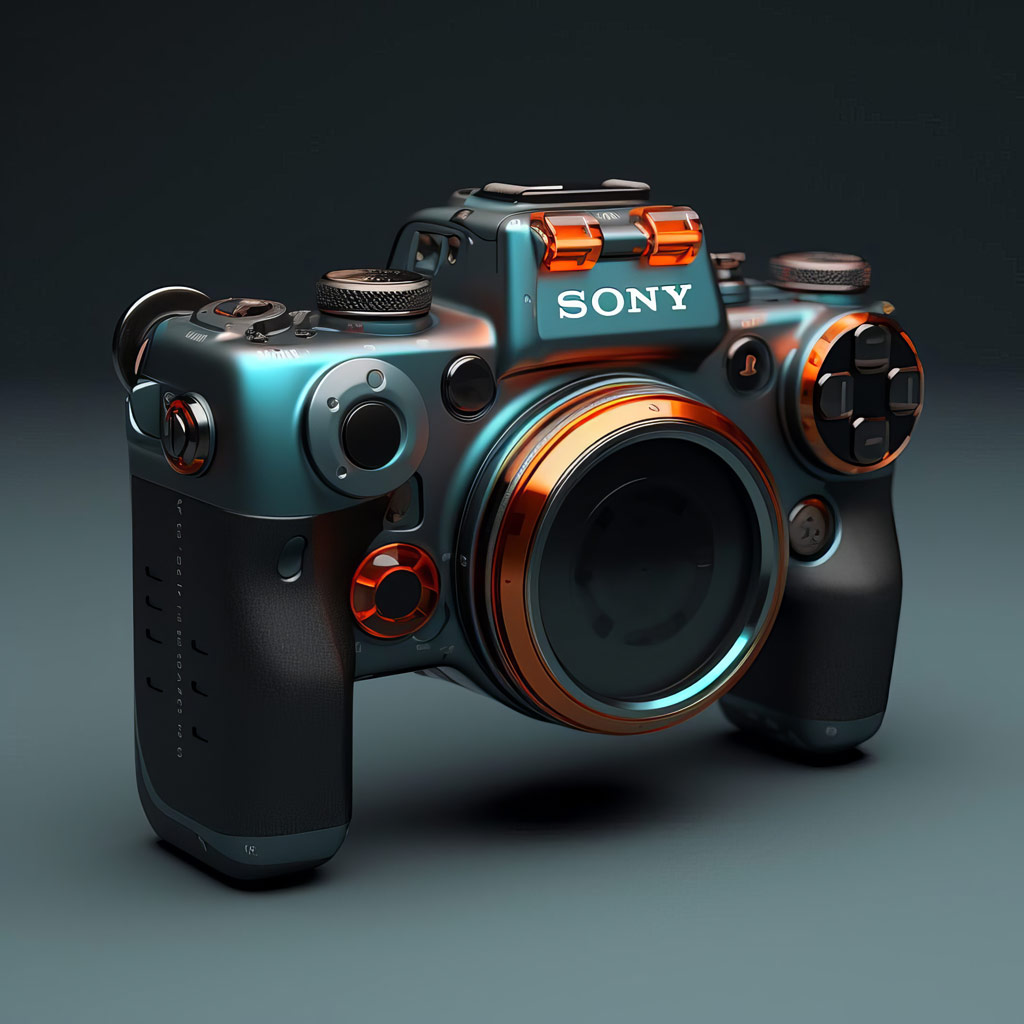
The new Sony Alpha camera inspired by the PlayStation controller design. AI-generated image by Andrea Pizzini
He says it takes time to learn how the algorithm responds to prompts, and advises that image creation is as simple as pressing a camera shutter release, but you have to be concise with the prompt words. He likens the process to putting a puzzle together; a combination of using the right prompts and understanding how these are weighted in terms of importance within the AI algorithm.
Andrea goes on to discuss how AI isn’t as reliable for creating more complex images, at the moment at least. And that the creation of the Sony cameras works well because they’re essentially simple objects despite the high levels of detail and realistic presentation. Even so, it took him a couple of months to find his feet with word prompts and to create a camera image he was happy with. He clearly enjoys the challenges of the process and his enthusiasm for it comes across in a way that inspires you to try creating AI images yourself, but he’s also clear about the ethical side.
While the process is, for the most part incredibly simple, it also requires patience and dedication to learn the quirks of the algorithm and how prompt words are interpreted. His process has been refined over the short time he’s been using Midjourney, but his approach is fairly simple, building images in stages rather than simply typing in all the prompts he thinks might work at once. This more considered approach might be likened to using Layers in Photoshop, where you build the processing of images in steps that are clearly defined and can delete layers if you’re unhappy with a specific result.
Andrea describes his process concisely. ‘I start with the object, describing the light and the viewing angle. I then move on to the details and there’s a certain approach I use where every piece of the structure has different variables. For example, when it comes to light, I have 50 types of lighting written down on a text file. I combine all the variables to get as close to the image I’m aiming for as possible. Sometimes it can take one or two minutes, and sometimes I have to work on an image for weeks.’
When asked how he feels about the ethical side of AI-generated imagery concerning the kinds of images he produces, Andrea puts forward an insightful and compelling argument in favour of AI imagery that could make even the most hostile commentators consider their stance on the subject. He explains how the AI algorithms don’t have a database of images, they’re made up of lines of code trained on millions of images and are so small in data terms that they could be stored on a USB drive. But that, ‘AI tools, basically scrape the photos and information that they found on the web without asking the authors, and then create an algorithm. So, the way that they gather this information is definitely at least problematic, if not totally unethical.’
Learning process
‘There’s also a whole discussion about photographers who are copying other photographers, learning their styles and shooting images like them, which is basically what the AI is doing – learning from other photographers. You also see a lot of bad photographers who are amazing with Photoshop; the images they create can be so heavily processed that they’re not always real.’
For Andrea, the whole exercise began out of curiosity using technology that he sees as being inevitable, and something that’s not going away. He has no intention of making money from AI images, he simply wanted to see just how powerful it is and how this new technology might impact the photography world.
AI-powered image creation is a complex subject and one we’ll no doubt be wrestling with for years to come, but there are certainly some similarities between the way we, as photographers, find inspiration and create images, and how AI image generators have been trained and subsequently create images. And let’s not forget, Andrea isn’t trying to trick people into believing a new reality or even mimicking it, he’s working within the realms of fantasy. And who knows, one day we might see some of his ideas incorporated into mainstream camera design, and even if we don’t, we can simply enjoy his creative vision.
Related reading:
- Best Sony cameras you can buy now
- Getty Images launches AI image generator
- AI images in the news media must be labelled, says Magnum boss
- With generative fill, Photoshop takes AI to a whole new level
- The human cost of artificial intelligence in photography
Follow AP on Facebook, Twitter, Instagram, YouTube and TikTok.

